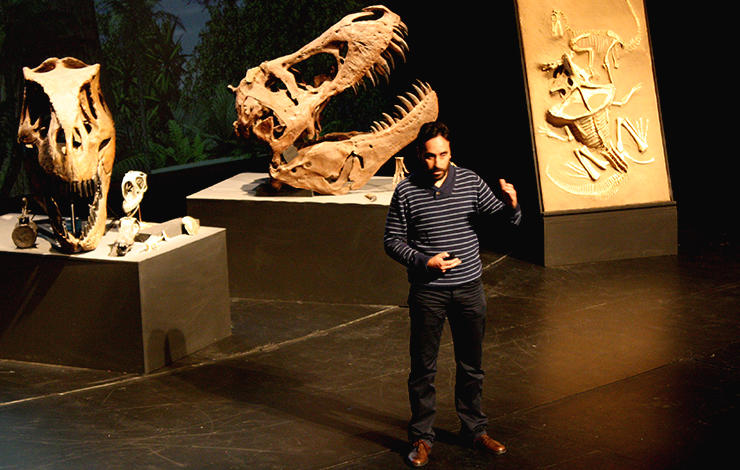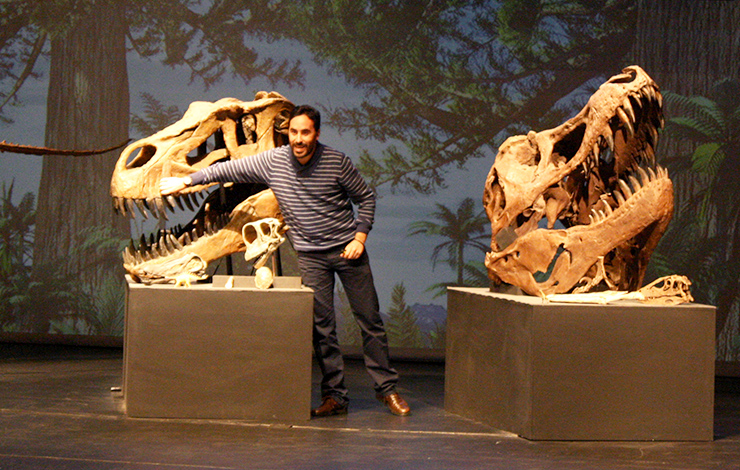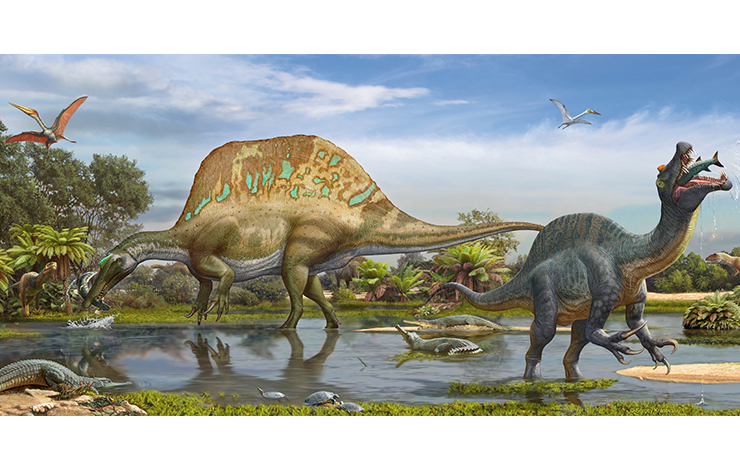22-12-2015

It was held at December 21 the fourth edition of the Christmas Conference organized by the "Ciência Viva". The speaker was Professor Octavio Mateus (FCT NOVA) "In the footsteps of the Dinosaurs" at the Teatro Dona Maria II.
Octávio Mateus talked about various species of dinosaurs, but the highlight was for some of the twenty species discovered in Portugal, in Mesozoic rocks at Cabo Espichel, Peniche and Lourinhã, where most discoveries occurred, and Algarve.
Regardless our country scale, we are one of the globe areas with more dinosaurs variaties in the world such as the Torvosaurus Gurneyi, the Zby Atlanticus, the Lusotitan Atalaiensis, the Miragaia Longicollum and the Metoposaurus Algarvensis. It was also mentioned that the Brontosaurus discovery, first considered as being equal to the Plotosaurus, but ultimately proved to be a different species. This discovery in 2015 embodied the 12th top "Science Story" and it was the 55th most influential scientific paper of the year, which is very significant considering that annually more than 1.5 million scientific articles are published.
Finally, Professor Octávio Mateus recounted some of his expeditions in the forests of Laos, in the Gobi Desert in Mongolia, Greenland and Angola.


The Ciência Viva Christmas conferences are organized in partnership with scientific institutions of reference and inspired by the Christmas Lectures at the Royal Institution of London, created in 1825 by Michael Faraday, directed at audiences of all ages.
Recently the Professor was involved in a new study reveling that fossilized upper jaw bones belonging to large fish-eating dinosaurs known as spinosaurs show that these animals’ mandible laterally widened when opening the mouth to better swallow prey, according to a paper published in PLOS ONE on January the 6th, 2016 by leading author Dr. Christophe Hendrickx from Universidade Nova de Lisboa and Museu da Lourinhã.
The study reveals that the lateral widening of the lower jaw was possible in spinosaurs thanks to a loose and movable articulation between the left and right parts of the mandible. “Spinosaurs were very strange animals with a crocodile-like skull showing a long and narrow snout and conical teeth,” explained Octávio Mateus from Universidade Nova de Lisboa, that also participated in the research. “Direct evidences indicate that these dinosaurs were fish eaters, and our study shows, for the first time, that they were able to swallow large prey such as fish in a similar way as our living pelicans,” added Hendrickx.
Scientists say that the skull bones also support the presence of two species of spinosaurs in what is now Morocco in the middle of the Cretaceous, around one hundred million years ago. The first species was identified by the paleontologists as Spinosaurus aegyptiacus, a semi-aquatic dinosaur and one of the largest terrestrial predators. “This lineage of predatory dinosaurs that leads to Spinosaurus can be traced back to the Jurassic period, and gradually adapted to a new semi-aquatic life-style,” said Eric Buffetaut, a co-author of the publication from the CNRS in France.
 Spinosaurus was recently considered as a quadrupedal animal with dense bones and short legs adapted to swimming, based on new fossil material from the same region of Morocco. Hendrickx and colleagues, however, estimate that the presence of more than one species of spinosaurs in these deposits casts doubt on the accuracy of the reconstruction of a short-legged quadrupedal Spinosaurus, which may have been based on elements from several distinct animals. “Only the discovery of additional fossils from Morocco will confirm our hypothesis of the presence of more than one species of spinosaurs in the Late Cretaceous of North Africa,” concluded Hendrickx.
Spinosaurus was recently considered as a quadrupedal animal with dense bones and short legs adapted to swimming, based on new fossil material from the same region of Morocco. Hendrickx and colleagues, however, estimate that the presence of more than one species of spinosaurs in these deposits casts doubt on the accuracy of the reconstruction of a short-legged quadrupedal Spinosaurus, which may have been based on elements from several distinct animals. “Only the discovery of additional fossils from Morocco will confirm our hypothesis of the presence of more than one species of spinosaurs in the Late Cretaceous of North Africa,” concluded Hendrickx.